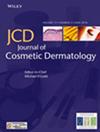Skincare Benefits of a Postbiotic Ferment Produced Through Djon Djon Mushroom Fermentation by Saccharomyces
Abstract
Background
Djon Djon is a particularly special black mushroom indigenous to Haiti that has a long history in both their cuisine and in traditional medicine. Centuries of folkloric utilization of theses “medicinal” botanicals tend to indicate the presence of a potentially efficacious western medicine entity.
Objectives
With the advantages afforded by both traditional medicines and fermentation, we endeavored to investigate if fermentation of Djon Djon mushrooms can provide skin care benefits.
Methods
In this study, active Djon Djon fermentation broth (DDF) was obtained using Saccharomyces, and anti-inflammatory efficacy was assessed in cultured systems using human keratinocytes and fibroblasts, exposed to either UVB or H2O2 respectively. In addition, RNA-Seq technology was employed to further characterize the mechanisms of DDF following ultraviolet irradiation.
Results
Characterization of the DDF displayed a high number of polysaccharides and peptides present following fermentation, that function to scavenge intracellular ROS, decrease MDA content, while increasing the levels of CAT, COL-I, and HA in HSF induced by H2O2. In addition, levels of pro-inflammatory factors (IL-6, IL-1β, and TNF-α) were decreased in UVB irradiated HaCaT cells that had been treated with DDF. Analysis of cellular RNA indicated that DDF altered the DEGs involved in the AGE-RAGE signaling pathway suggesting that this signaling cascade is inhibited by DDF. Additionally, DDF also influenced the metabolism of arachidonic acid, histidine, and phenylalanine, which are involved in inflammatory processes.
Conclusion
DDF can alleviate oxidative stress damage caused by hydrogen peroxide and photodamage caused by UVB, and the mechanism by which DDF protects skin cells is revealed, displaying the potential benefits of fermented DjonDjon in skincare.


 求助内容:
求助内容: 应助结果提醒方式:
应助结果提醒方式:


